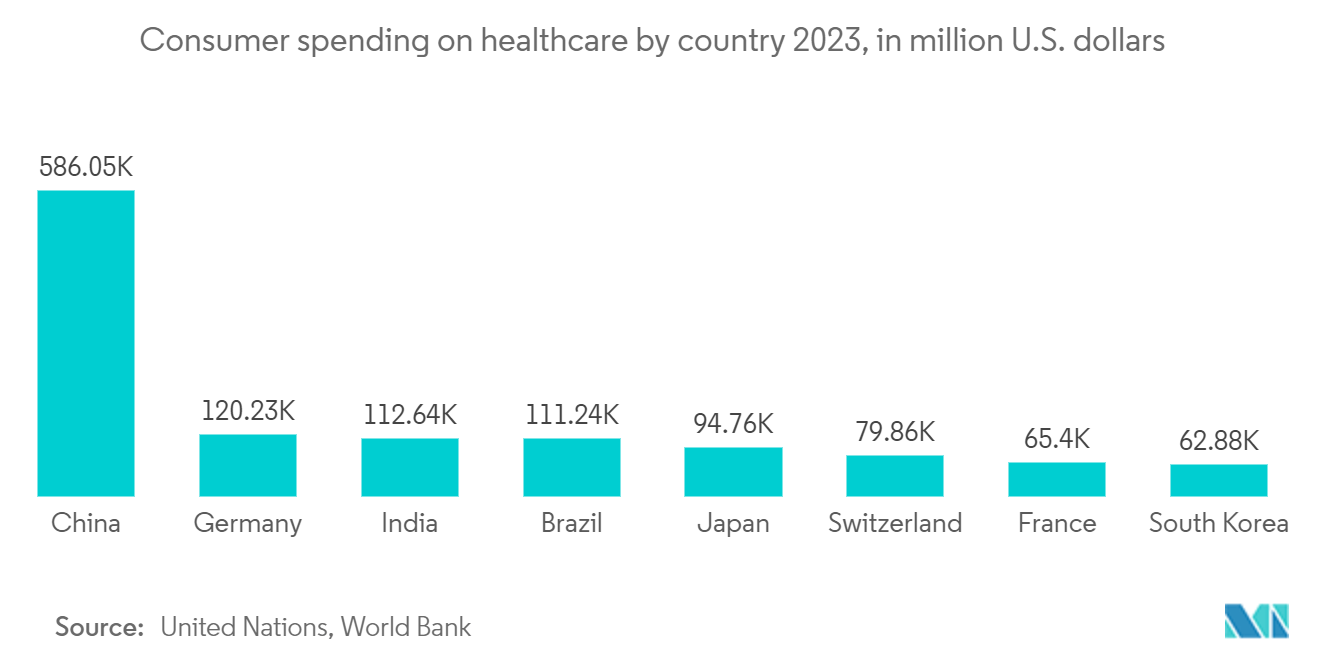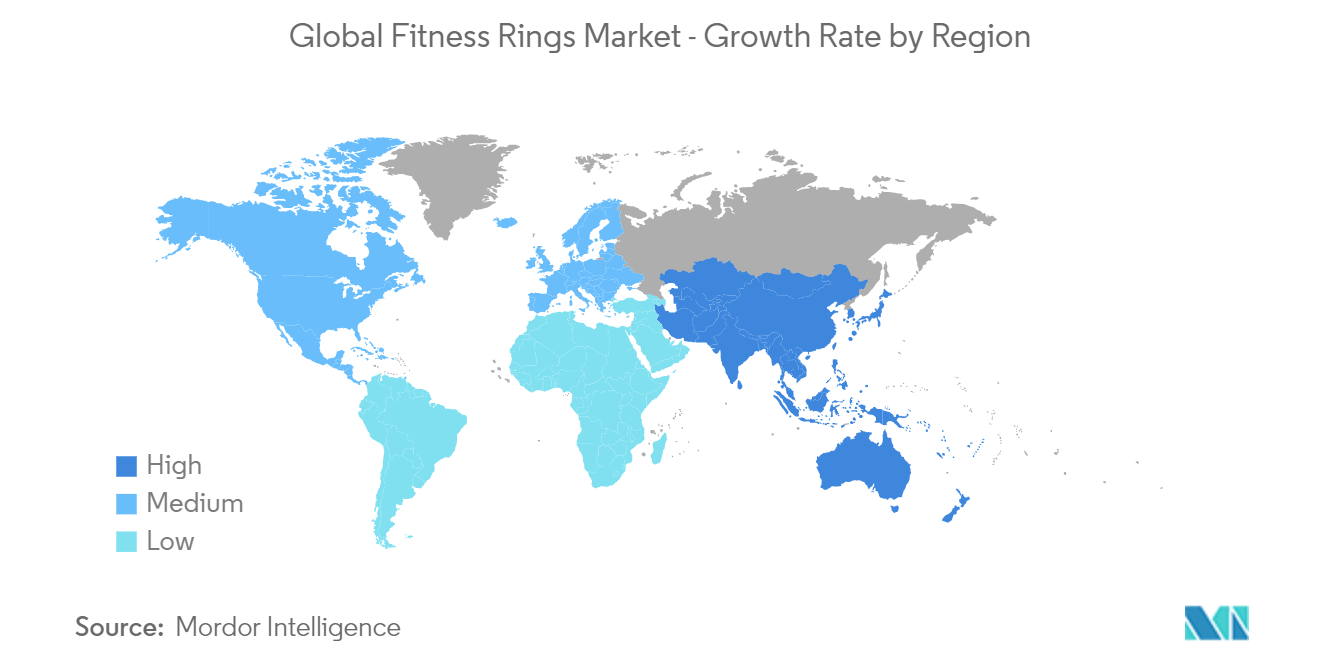Market Trends of Global Fitness Rings Industry
Growing demand of Smart Fitness Rings
- In recent years, the health and wellness industry has experienced a significant transformation driven by advancements in wearable technology. Smart fitness rings stand out as a particularly innovative and rapidly growing segment among the various emerging products. These devices offer a range of functionalities that appeal to health-conscious consumers, tech enthusiasts, and fitness professionals alike.
- Consumers are widely using Smart fitness rings, which offer various health monitoring capabilities, including heart rate variability (HRV), blood oxygen levels (SpO2), body temperature, and sleep stages. Consumers have made significant investments in healthcare. For instance, as per the report published by the World Bank and UN, in 2023, the total consumer spending on healthcare in the United States was recorded at USD 3.8 trillion. China follows closely behind with USD 586 billion. Such growing spending by consumers is driving the demand for wearable devices globally.
- Moreover, compared to basic rings, Smart fitness rings typically offer longer battery life than smartwatches or fitness bands, often lasting several days or weeks on a single charge. This extended battery life reduces the need for frequent recharging, making them more convenient for users.
- Additionally, the outlook for smart fitness rings is promising. With ongoing technological advancements, more sophisticated features are expected to be integrated into these devices. These may include glucose monitoring, enhanced sleep tracking, and AI-driven personalized health recommendations. Additionally, smart fitness rings are poised to reach a wider audience as production costs decline.

North America is Expected to Hold Major Share
- In recent years, the demand for fitness rings in North America has grown significantly, driven by a combination of technological advancements, increasing health awareness, and evolving consumer preferences for wearable technology. One key factor fueling the rising demand for fitness rings in North America is the rapid pace of technological innovation.
- Also, the adoption of advanced algorithms and machine learning techniques has further enhanced the functionality of these rings. By analyzing the data collected, these devices can provide personalized health insights, helping users make informed decisions about their fitness and wellness routines.
- For instance, in July 2024, Samsung unveiled its latest device at its Galaxy Unpacked events, further expanding its ecosystem. Among the showcased innovations were Smart Rings, equipped with tiny sensors to monitor diverse health metrics. The company designed the Galaxy Ring for 24×7 wear and can last for seven days on a single charge. The new ring comes with Galaxy AI features and uses several advanced algorithms to keep the users' fitness metrics in check, all in real-time.
- Moreover, the region is witnessing a growth in chronic diseases. As per the report published by U.S Centres for Disease Control and Prevention in 2024, every year, heart disease and stroke claim the lives of over 944,800 Americans. Beyond the human cost, these ailments impose a significant economic burden on the U.S. healthcare system, which shoulders an annual expense of USD 254 billion, while lost workplace productivity amounts to another USD 168 billion.
- With the increasing health issues, the demand for fitness rings has surged. These devices monitor and analyze health data daily, enabling users to identify potential health concerns early. This proactive approach not only facilitates timely medical intervention but also has the potential to alleviate some pressure on healthcare systems.


